Dave Weaver and I met a bunch of puffy, well-insulated birders this Wednesday, all expecting to be very cold. As we made our way in the vans through Plum Island’s developed section and approached the north end, a Cooper’s Hawk took off to fly up the road in front of us. We followed this bird, which raced straight toward oncoming traffic, veering to the side to avoid a collision, then zipping back to speed ahead in the wrong lane. If you are an Accipiter, the rules don’t seem to apply. Out at the river’s edge, facing into the northwest wind, just trying to look at the water without tears blurring everything, the challenge of the weather hit us immediately. A handsome drake White-winged Scoter foraged right off the near shore, which helped us to be brave enough to look out across the river at Common Eiders, more of the scoter’s conspecifics, a few Red-breasted Mergansers, Common Goldeneyes, and a Red-throated Loon. Then someone said “Uncle,” and I thought that this might be a somewhat quick WMB.
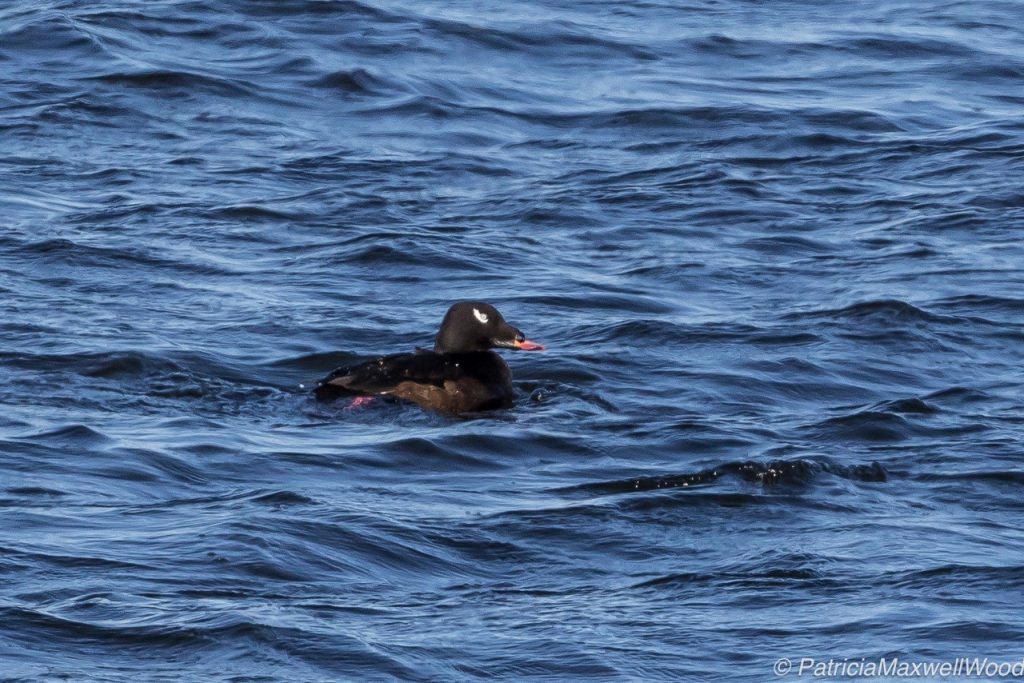
White-winged Scoter off North End – Patti Wood
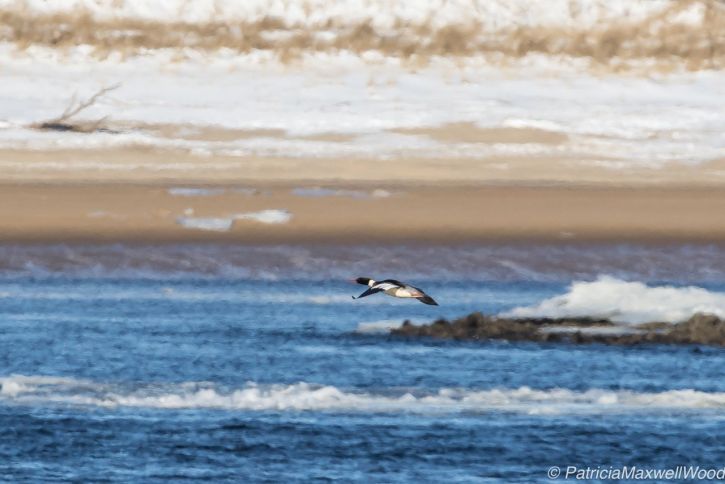
Red-breasted Merganser off North End – Patti Wood
On the way to parking lot #1 on the Parker River National Wildlife Refuge, we saw a light-colored lump on the Osprey nesting platform in the marsh west of the boat ramp. Sure enough, our Snowy Owl for this week was getting a good vantage on prey from up there. We could check the Snowy off the list, but weren’t near close enough to look into the bird’s soul. Once again, the ocean off of the platform was rather empty. We really don’t have a hypothesis for where all the loons, grebes, and scoters have gone, but there continued to be a nice raft of Black Scoters hanging around off of the little local jetties. Gulls, however, were active over the water, and all of a sudden Tom Wetmore, whom we had found on the platform, pointed out a Black-legged Kittiwake! The bird flew back and forth in front of us, vigorously diving to the surface and banking turns sharply. Tom refers to the species as “the Errol Flynn of gulls.” We had not had one on WMB for several years, and this is only our fourth record.
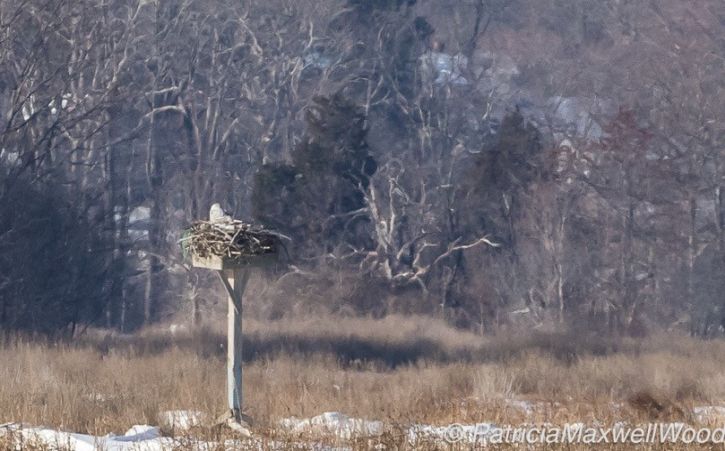
Snowy Owl on Osprey platform – Patti Wood
Just one Common Loon was on the sea, and one flew over the parking lot. From the platform, we also had a good view of a light-morph Rough-legged Hawk over the north marsh, and we enjoyed watching a couple of crows diving on an immature Red-tailed Hawk. We heard the twittering of “ground birds” from the boardwalk, but only got good looks at one Horned Lark and one Snow Bunting. The others seemed to be avoiding exposure to the wind.
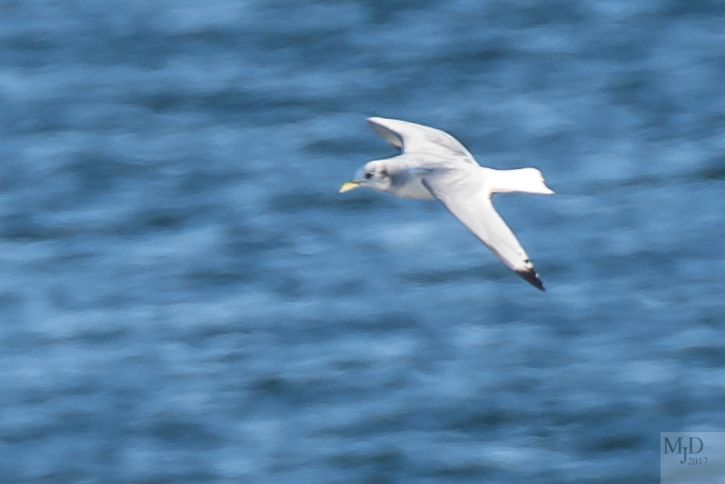
Black-legged Kittiwake off parking lot #1 – Mike Densmore
Buoyed by the rare find of a kittiwake and other notable species, we headed south, finding the salt pannes utterly desolate and frozen. There were birds hopping along the side of the road in the S-curves, though, and after passing a few unidentified sparrows, we saw the first of three Hermit Thrushes for the day.
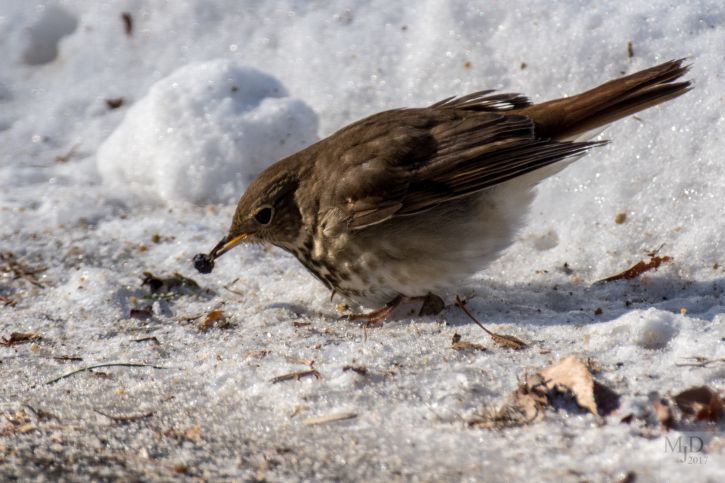
Hermit Thrush foraging in S-curves – Mike Densmore
At Hellcat, we marched up onto the dike as we always do. Oops! It was a deadly cold wasteland up there, not a feather in sight, the road a bed of rough, wind-swept ice. It seemed prudent to turn right around and retreat. This was the exact opposite of the times we have gone up there to have our breaths stolen by avian abundance and beauty. The memories of great flocks of egrets, shorebirds, and others greeting our arrival there, juxtaposed with the stark and forbidding beauty of the birdless and bitter winter day before us, brought a certain joy of its own for the sheer amplitude of what nature does in our Great Marsh. Here we are, with the sun at its ebb and arctic blasts bearing down on us, yet we know that every bud will burst in due time, and every bird that survives its amazing peregrinations will pronounce “Life!” when it returns.
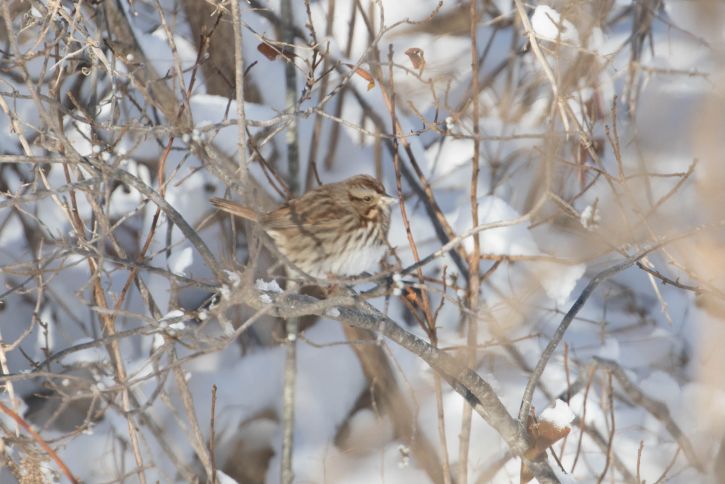
Song Sparrow surviving – David Moon
We ended our rigorous search for survivors and thrivers with a little walk on the road near The Wardens. While all we found were a few resident species, one Song Sparrow pecking in the dirt had particularly good light on it. Seeing that fit little beast doing just what is necessary to keep caloric intake adequate through this climatic gauntlet was a great satisfaction in itself. It reminded me of how we must do the same in the face of setbacks in our ongoing progress to engineer a better balance between our species and nature, one seed and one step at a time. Wednesday Morning Birding returned to Joppa Flats 20 minutes early this week, but we did more in that shortened time than we sometimes do when we can loll about. We’re always glad to welcome you with the sights of the season, whatever the weather!
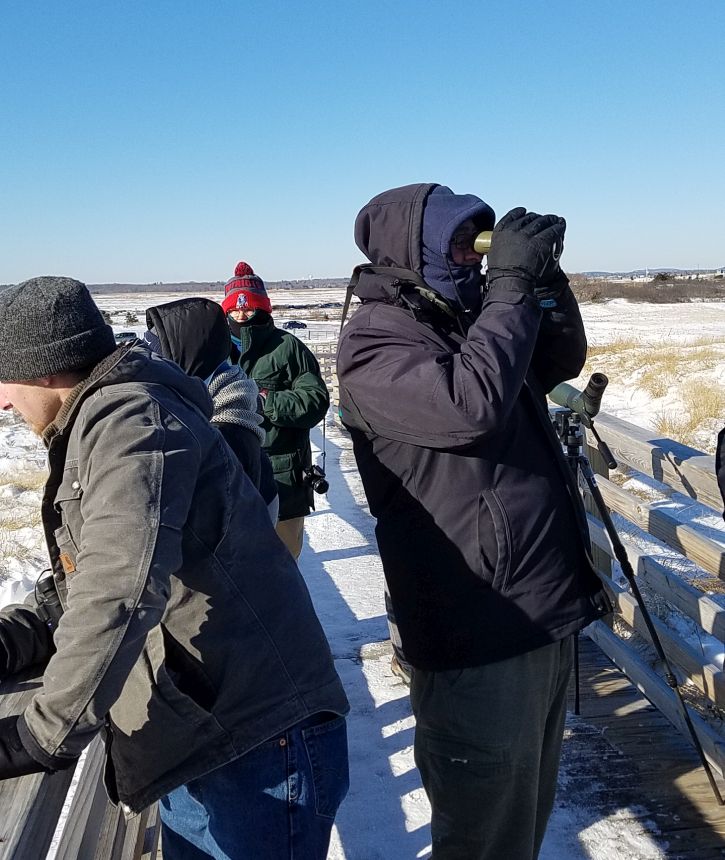
WMB’rs surviving – David Moon
Our list:
Canada Goose (14)
American Black Duck (~ 40) – various, but mostly toward mouth of PI River.
Common Eider (~ 20) – n. end.
White-winged Scoter (7) – n. end.
Black Scoter (~ 25) – one ocean.
Common Goldeneye (4) – n. end.
Red-breasted Merganser (3) – n. end.
Red-throated Loon (1) – n. end.
Common Loon (3) – 1, n. end; 1, one ocean; 1, fly over, lot #1.
Northern Harrier (3)
Cooper’s Hawk (1) – road to n. end.
Red-tailed Hawk (1) – juv. adj. lot #1.
Rough-legged Hawk (1) – light morph over marsh n. main gate.
Black-legged Kittiwake (1) – one ocean — wonderfully close looks; thank you, Tom Wetmore!!
Ring-billed Gull (3) – no doubt more; one ocean.
Herring Gull – common.
Great Black-backed Gull (2)
Rock Pigeon
Snowy Owl (1) – perched on Osprey nesting platform, w. lot #1.
[Blue Jay (1) – Joppa Flats.]
American Crow (~ 7)
Horned Lark (1) – lot #1 platform.
Hermit Thrush (3) – roadside, S-curves.
American Robin (3) – S-curves.
Northern Mockingbird (2) – 1, The Warden’s; 1, S-curves.
European Starling (1) – !!
Cedar Waxwing (3) – s. North Field.
Snow Bunting (1) – flyover, lot #1.
American Tree Sparrow(4) – S-curves.
Song Sparrow (2) – The Warden’s.
White-throated Sparrow (~ 9) – S-curves.
Dark-eyed Junco (1) – S-curves.
Northern Cardinal (2) – S-curves.

